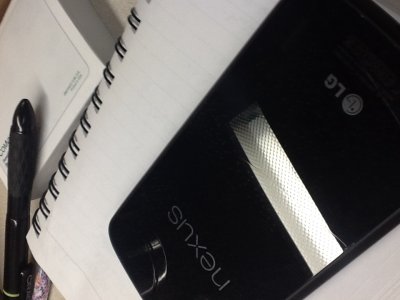you are still talking about glass, but try this with glass with some tension from frame and it will crack. same happened in my car with front window...
I just don't understand why some of you trying to prove that we are wrong... we know what happened with our phones, not you...
I'm fairly certain that I listed stress as a possible cause of the crack. Frames flexing will definitely cause glass to crack. Glass on an automobile is held in place with a urethane adhesive. It gives it the ever so slightest amount of give. What it won't do, however, is what some are claiming, the "magic" cracking of the glass. All I'm (and others) are saying is that maybe those that have had the back glass crack have put tension on it
without knowing. I'm still trying to understand how it's so hard to accept that things can happen without your knowledge, or on accident.
No. It's you who doesn't seem to understand the science of how glass heats and how that relates to specific heat of objects it is put on. Concrete and granite do not have the same specific heat. And glass doesn't need to be that thick in order to create temperature differentials between two surfaces, especially when one surface is in contact with an object (concrete) that draws heat fast and the other is not. What I'm talking about isn't only realistic, it's scientific fact. Human touchability is not a proper measure of temperature. If it were, thermometers would be obsolete.
You can feel free to argue with science, or try what I said and see what happens.
Sent from my Nexus 4 using Android Central Forums
Again, splitting hairs. What's the temp difference between the two surfaces of glass when the glass is 1mm thick? How "scientific" would you like to get? We don't even know what kind of glass the back is, let alone its chemical makeup. That would mean we have no idea what the glass was designed to endure, where it's structural weaknesses could lie, or anything else. It could just be regular old silica glass, with no special processes or additives to give it more resiliency at all. Heck, we don't even know the exact chemical makeup of Gorilla Glass 2. But saying that heating a regular pane of glass to temperatures far beyond what our phone will get to, then placing them on a cold concrete surface isn't more extreme than what our phones endure is, really, kind of ignorant. If I had a granite surface I would use it.
As for your human touch point. Sure, fair enough. But how many times has your phone been too hot to touch? And where was it if it ever happened? ONLY in direct sunlight will it get like that. Or if it is faulty hardware and doesn't properly throttle itself. But if that's the case your phone is going to burn itself out.
You know what's even harder on glass? Heating it up a LOT and then spraying ice cold water on it. But I guess then you're going to argue that I can't guarantee that the water is hitting the pane evenly or something else like that.
Page 2, second paragraph of
THIS article should help settle this. Scientific enough for you?


